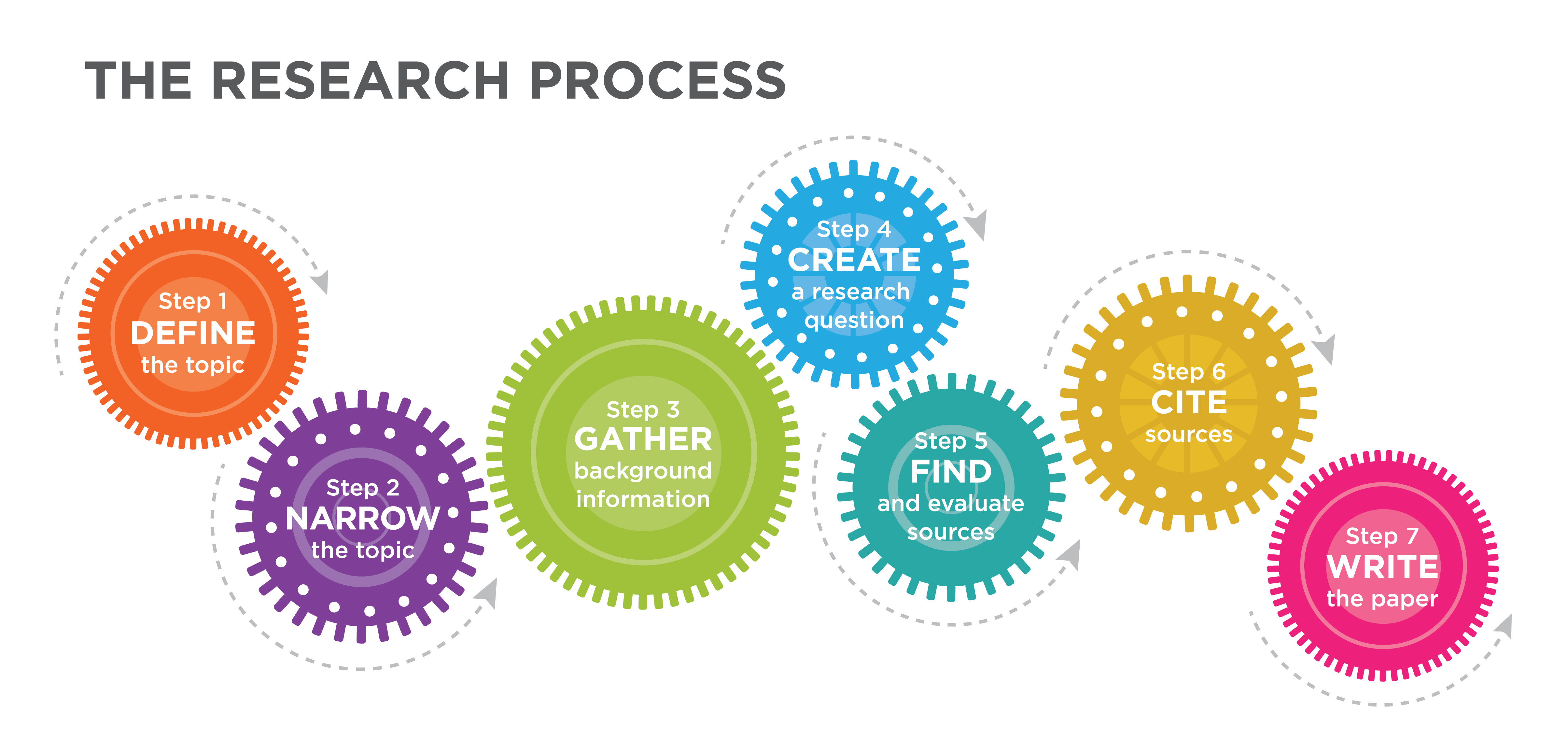85 Preliminary Research Strategies

The first step towards writing a research paper is pretty obvious: find sources. Not everything that you find will be good, and those that are good are not always easily found. Having an idea of what you’re looking for–what will most help you develop your essay and enforce your thesis–will help guide your process.
Example of a Research Process
A good research process should go through these steps:
- Decide on the topic.
- Narrow the topic in order to narrow search parameters.
- Create a question that your research will address.
- Generate sub-questions from your main question.
- Determine what kind of sources are best for your argument.
- Create a bibliography as you gather and reference sources.
Each of these is described in greater detail below.

Preliminary Research Strategies
A research plan should begin after you can clearly identify the focus of your argument. First, inform yourself about the basics of your topic (Wikipedia and general online searches are great starting points). Be sure you’ve read all the assigned texts and carefully read the prompt as you gather preliminary information. This stage is sometimes called pre-research.
A broad online search will yield thousands of sources, which no one could be expected to read through. To make it easier on yourself, the next step is to narrow your focus. Think about what kind of position or stance you can take on the topic. What about it strikes you as most interesting? Refer back to the prewriting stage of the writing process, which will come in handy here.
Preliminary Search Tips
- It is okay to start with Wikipedia as a reference, but do not use it as an official source. Look at the links and references at the bottom of the page for more ideas.
- Use “Ctrl+F” to find certain words within a webpage in order to jump to the sections of the article that interest you.
- Use Google Advanced Search to be more specific in your search. You can also use tricks to be more specific within the main Google Search Engine:
- Use quotation marks to narrow your search from just tanks in WWII to “Tanks in WWII” or “Tanks” in “WWII”.
- Find specific types of websites by adding “site:.gov” or “site:.edu” or “site:.org”. You can also search for specific file types like “filetype:.pdf”.
- Click on “Search Tools” under the search bar in Google and select “Any time” to see a list of options for time periods to help limit your search. You can find information just in the past month or year, or even for a custom range.

As you narrow your focus, create a list of questions that you’ll need to answer in order to write a good essay on the topic. The research process will help you answer these questions.
Another part of your research plan should include the type of sources you want to gather. Keep track of these sources in a bibliography and jot down notes about the book, article, or document and how it will be useful to your essay. This will save you a lot of time later in the essay process–you’ll thank yourself!

